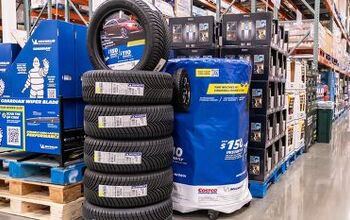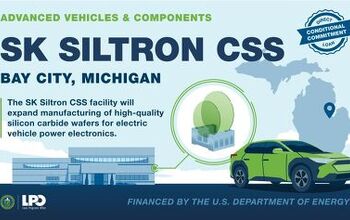IHS Expects Auto Industry To Crater After Japanese Earthquake

Parts shortages triggered by the earthquake and tsunami in Japan could reduce global automobile production by up to 30 percent, research firm IHS Automotive told Bloomberg. Or at least that’s what Bloomberg heard.
Michael Robinet, vice president of IHS says that if parts plants affected by the quake don’t return to operation within six weeks (they might not), global auto output may drop as much as 100,000 vehicles a day. The industry produces 280,000 to 300,000 vehicles daily, he said. That number is correct, assuming the standard 260 work days a year.
“Most vehicle manufacturers will be affected by this,” Robinet told Bloomberg. “It will be very difficult for any major automaker to escape this disaster.” That is also correct.
About 13 percent of global auto industry production is down right now and production of about 320,000 vehicles has been lost, mostly in Japan, Robinet said according to Bloomberg. True.
According to Robinet, auto executives are cautious about forecasting lost production. They seek other sources for parts. “If solutions aren’t found soon, most major automakers will experience disruptions by mid-April because supply networks are intertwined.” Very true.
According to HIS, the third week of April could be the start of severe production slowdowns. TTAC had projected the April/May timeframe early on. Morgan Stanley agrees.
By then, the industry may have lost 1.2 million to 1.8 million vehicles, and will lose almost 3 million units within eight weeks. IHS estimates about half of the losses coming from assembly plants outside of Japan. Absolutely possible.
“We could lose up to 5 million vehicles in a worst-case scenario,” Robinet said. “This will affect income for the entire year if this continues for an extended period of time.” Also true.
What is not right is Bloomberg’s math. By using the 5 million worst case number, IHS figures that in the course of the year, either the Japanese suppliers will get back on their feet, or the worldwide producers will have found other sources. The world produced 77.6 million vehicles last year. A loss of 5 million would be a serious loss of 6.4 percent. But not a loss of 30 percent.
6.4 percent would be bad enough.

Bertel Schmitt comes back to journalism after taking a 35 year break in advertising and marketing. He ran and owned advertising agencies in Duesseldorf, Germany, and New York City. Volkswagen A.G. was Bertel's most important corporate account. Schmitt's advertising and marketing career touched many corners of the industry with a special focus on automotive products and services. Since 2004, he lives in Japan and China with his wife <a href="http://www.tomokoandbertel.com"> Tomoko </a>. Bertel Schmitt is a founding board member of the <a href="http://www.offshoresuperseries.com"> Offshore Super Series </a>, an American offshore powerboat racing organization. He is co-owner of the racing team Typhoon.
More by Bertel Schmitt
Latest Car Reviews
Read moreLatest Product Reviews
Read moreRecent Comments
- 3-On-The-Tree My 2009 C6 corvette in black looks great when it’s all washed and waxed but after driving down my 1.3 mile long dirt road it’s a dust magnet. I like white because dust doesn’t how up easily. Both my current 2021 Tundra and previous 2014 Ford F-150 3.5L Ecobomb are white
- Bd2 Would be sweet on a Telluride.
- Luke42 When will they release a Gladiator 4xe?I don’t care what color it is, but I do care about being able to plug it in.
- Bd2 As I have posited here numerous times; the Hyundai Pony Coupe of 1974 was the most influential sports and, later on, supercar template. This Toyota is a prime example of Hyundai's primal influence upon the design industry. Just look at the years, 1976 > 1974, so the numbers bear Hyundai out and this Toyota is the copy.
- MaintenanceCosts Two of my four cars currently have tires that have remaining tread life but 2017 date codes. Time for a tire-stravaganza pretty soon.


































Comments
Join the conversation
Is that person standing next to some kind of stretched limo Toyota bB?
I used to think that Murilee Martin's posts from the boneyards were the most depressing thing, these pix from Japan truly are. Hopefully, they can get on their feet again soon. Many folks are worried about supplies for the automotive processes. I think that this prolonged event will force the major companies to find other suppliers posthaste. It's hard to say how this will effect Japan in the long run.